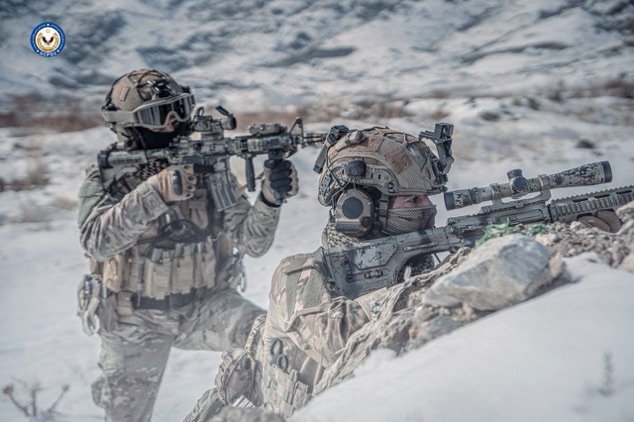News Type: Military Analysis
Country: Afghanistan

The recent revelation that the Taliban’s Special Police Unit (GCPSU) in Afghanistan is conducting military training while being armed with advanced weaponry originally supplied to the Afghan National Defense and Security Forces by the U.S. and NATO allies has raised significant concerns. This report delves into the specifics of the armament, including DPMS Panther LRT-SASS sniper rifles, customized M4(A1) carbines, and Smith & Wesson SW9VE pistols, and assesses the broader implications of such military capabilities being in the hands of the Taliban.




Global Conflicts and Military Analysis:
• Taliban’s Military Capabilities:
• Following the U.S. withdrawal, a substantial amount of U.S.-funded military equipment, estimated at $7.12 billion, fell into the hands of the Taliban. This included aircraft, ground vehicles, and a vast array of weapons .
• The equipment captured by the Taliban includes more than 2,000 armored vehicles like U.S. Humvees and up to 40 aircraft, potentially including UH-60 Black Hawks .
The recent images and reports regarding the Taliban’s Special Police Unit (GCPSU) provide a startling visual confirmation of the group’s access to advanced U.S. and NATO military equipment. The significance of this development cannot be overstated, as it represents not only a material gain for the Taliban but also a symbolic display of power and capability.
Armed with U.S./NATO Weapons:
• DPMS Panther LRT-SASS Sniper Rifle: The DPMS Panther LRT-SASS is a sniper rifle designed for precision and range. It is part of a class of weapons intended for long-range targeting, essential in both offensive and defensive operations. The procurement of such weapons by the GCPSU indicates their capacity for engaging in combat scenarios that require accuracy over distances, which can significantly impact the dynamics of any engagement.
• Customized M4(A1) Carbines: The M4 carbine is a shorter and lighter variant of the M16A2 assault rifle and is a standard-issue firearm in many NATO forces. Its customization for the GCPSU likely includes enhancements for accuracy, rate of fire, and adaptability to various combat situations. The presence of these rifles in the hands of the Taliban’s unit suggests that they possess not only the weaponry but also the technical knowledge to modify and maintain such equipment.
• Smith & Wesson SW9VE Pistols: Smith & Wesson pistols are known for their reliability and are widely used in law enforcement and military operations. The SW9VE model is a semi-automatic pistol that offers a high degree of control and is effective in close combat scenarios. This sidearm provides the GCPSU with a personal defense weapon that complements their heavier arms.
The Implications of These Armaments:

The presence of these advanced weapons systems within the ranks of the Taliban’s Special Police Unit has several implications:
• Enhanced Military Capabilities: The unit’s access to such weaponry enhances their operational capabilities, allowing them to conduct a wide range of military operations with increased effectiveness.
• Training and Maintenance: The effective use of these sophisticated weapons indicates that the Taliban has the ability to train its personnel and maintain the equipment, which may involve a level of organizational structure and technical knowledge previously not associated with the group.
• Geopolitical Repercussions: The visuals of the Taliban equipped with Western weapons serve as a stark reminder of the unintended consequences of foreign military involvement. The redistribution of these weapons could further destabilize the region and alter the balance of power.
• Potential for Increased Hostilities: With advanced weaponry, the GCPSU may engage in more strategic and potentially aggressive military postures, leading to an escalation of hostilities within the region.
Historical Context and Future Outlook:
This situation is reminiscent of past conflicts where insurgent forces have acquired significant military assets from opposing or retreating armies. The long-term impact of such an armament shift will depend on the Taliban’s strategy and the response of the international community. It is clear, however, that these developments have altered the military landscape in Afghanistan and will shape the nature of ongoing and future conflicts.
The acquisition of U.S. and NATO military equipment by the Taliban’s Special Police Unit marks a pivotal moment in Afghanistan’s ongoing conflict dynamics. The implications of this development are far-reaching, affecting not only the immediate security situation in Afghanistan but also posing broader geopolitical challenges. As the international community grapples with the ramifications, the focus will undoubtedly remain on how these advanced military assets are utilized and the potential for further destabilization in the region.




















+ There are no comments
Add yours